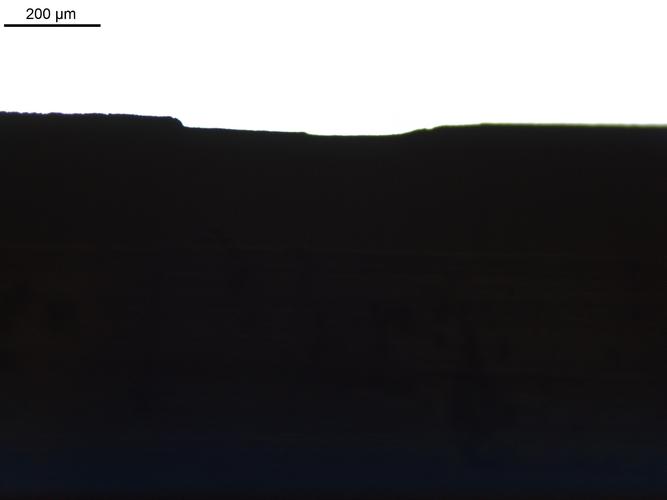Results 11 to 20 of 23
Threaded View
-
02-07-2012, 10:23 PM #1Member

- Join Date
- Jan 2012
- Location
- Indiana
- Posts
- 30
Thanked: 0 Looking for more advise regarding non visible micro chips on straight razor blade edg
Looking for more advise regarding non visible micro chips on straight razor blade edg
Hello:
This is a follow up to my initial tread on 1 feb. 2012 when I requested help dealing with non visible micro chips on a straight razor edge. I have carefully read all the posts and watch some of the suggestive videos. So, I started working on a used razor Benz (Solinger Blade) that I friend of my found it in an antique store in Indiana. I have worked on the edge using the 4K wet stone, but when I look under the microscope at 10X power I can see a substantial chip (invisible to my eyes). I have taken a photo the blade section in questions using a microscope with a camera and I am including it this message. The balde steel appears black and you could probably can tell the area with the long chip. Should I continue honing the blade with the 4K and be more patient or go to another stone, etc? I am hoping to learn more about inserting files so the quality could improve. Once again I look forward to your helpful advice.
Sincerely,
Swicth 59



 8Likes
8Likes LinkBack URL
LinkBack URL About LinkBacks
About LinkBacks






 Reply With Quote
Reply With Quote